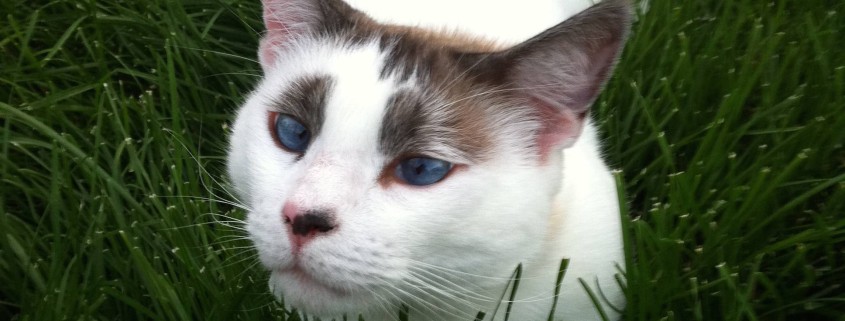Keeping cats indoors has become our cultural norm only in the last 20 years, and as a result of this, cats are living longer. However, it is not always the easiest decision, nor the right decision for every cat. The question that has always been in the back of my mind regarding outdoor cats is, “Does a longer life mean a fuller life?” I think the answer to that question likely depends on the cat and the living circumstances.
Benefits of the Indoors:
- Safety from cars, fights and injury from wildlife or dogs
- Longer life expectancy
- More domesticated- Many say that cats become more “domesticated” when kept indoors
- Protect wild birds
- Avoid risks from poisons and toxins
Benefits of the Outdoors:
- Reduced behavioral issues like unwanted scratching and urination
- Reduced aggression towards humans and other household pets
- Reduced emotional stress due to environmental stimuli
- “Barn” and “working” cats help keep rodent populations down
Keeping cats indoors is by far the most common sentiment regarding the responsibilities of cat guardianship. Life expectancies have greatly increased because of the reduced risks of traffic accidents, fighting, injury, and infection. A major consideration for keeping cats indoors is safety.
Attitudes about “outdoor vs. indoor” cats is influenced by our culture, both macro and micro. For instance our “national” attitude towards cats is to keep them indoors, whereas our “neighborhood” culture may be to allow them outdoors.
Confining a cat to the indoors can guarantee their safety, but it also restricts their natural instincts to hunt, mark their territory, and explore. As a result of this confinement we see more behavioral problems with indoor cats than with outdoor cats.
It is my personal opinion that not all cats are well suited for indoor life. Those cats that are not well suited for the indoors will find other undesirable ways to express their biological needs, such as aggression towards others, spraying, scratching, and inappropriate urination/defecation.
We all know that an indoor cat will likely have a longer life, but I don’t believe this necessarily means a fuller life. We tend to project our own desires on to our animals, and I am no different. I look at my cats and when I think about that choice they would make for themselves, I feel that they would take the risk because I can’t imagine living my life solely indoors. I crave the outdoors and it’s an essential part of living a balanced life.
So here’s how I will break it down: For those who choose to keep their cats indoors I will provide a list of ways to keep your cats well balanced and happy. And for those who choose to let their cats outdoors I will provide a list of ways to keep your cats safe.
Keeping Indoor Cats HAPPY!
- PLAY! Play is so important for allowing your cat to express their natural instincts to hunt and explore. Interactive toys such as laser pointers, “chaser” poles, and treat dispensing toys provide both physical and mental stimuli.
- Scratching posts allow your cat to “mark their territory.” Provide different types of scratching options, i.e. sisal, corrugated cardboard, and cat trees made from real wood and place them in several different areas of your house.
- Provide options to climb, jump, and perch. Cat trees, shelves, and window perches give your cat the ability to exercise and give them a safe zone to observe their environment.
- Playmate: Companion animals can provide social interaction that can be beneficial as long as the animals are provided with enough space and resources and their personalities are well suited for one another.
- Treasure hunt- When you are at work or gone for extended periods of time, think about hiding treats around the house. This is a fun game that will engage your cat both mentally and physically.
Keeping Outdoor Cats SAFE!
- Cat enclosures and cat-proof fencing- enclose a window or porch. Cat proof your yard with angled fence attachments that prevent your cat from jumping out of your yard. Check out www.CatMan-Do.com and www.EasyPetFence.com
- Take your cat for a walk! Cat harnesses can be a super fun way to spend time with your cat and give your cat a safe way to access the outdoors. Remember the key to success is to let your cat walk you!
- Outdoor time should be permitted during daylight hours only, and only when you are home to supervise.
- Make sure your cat is healthy and up-to-date on vaccinations.
- Train your cat to come when you call them…. yes, it’s possible!
In summary, I think it’s important to understand the needs of your cat on an individual level and to provide for those needs accordingly. Not every situation is black and white. Use your own best judgement and make the decision that’s right for your cat.











